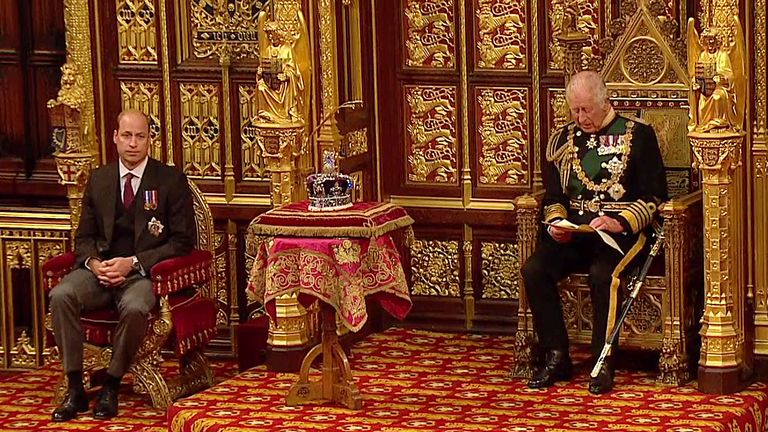[ad_1]
The same procession, the same ceremony and the same symbols of the crown, but with one constant from the past 70 years missing.
With no Queen to deliver her speech, this was a defining moment for the monarchy, one that historians will no doubt look back on as an occasion when the era of transition could not have been clearer.
Travelling in separate cars towards Westminster, the palace clearly wanted us to see this as a joint duty.
Charles has seen all this before, accompanying the Queen on a number of occasions, but for William it was a first, and a chance to witness a duty he may one day have to perform.
But for all the briefing that her son and grandson were doing this together, and attempts to shut down any suggestion that this was a regency in action, the image on the day looked very different.
With Prince Charles front and centre, it felt like a snapshot of the future; a time when this will be one of his key constitutional duties.
We thought there would be an empty throne. There wasn’t. He took the central seat.
Constitutional experts have taken great delight in scrutinising how the Queen decided to navigate this shift, describing it as a clear display of how the constitution has had to flex and change to accommodate a 96-year-old monarch who is having trouble getting around.
But the Queen and her advisers want to stress she may be ageing but she is not abdicating.
She will still have a virtual meeting with the privy council, she will still speak to the prime minister this week.
And she still wants to venture out in front of the crowds for her Platinum Jubilee if she can.
The decision to hand over this key constitutional role will not have been taken lightly.
Her Majesty would not want to do anything to cause uncertainty, which is why it was also in some ways the monarch again future-proofing an institution which she has worked so hard to protect; showing us that she has confidence in those who will one day take her place, and so should we.
[ad_2]


